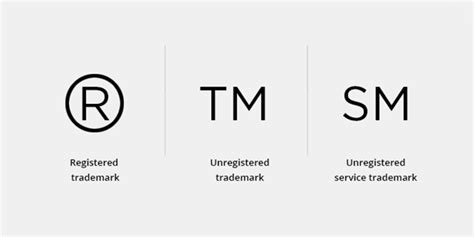How Do I Trademark An Idea

Trademarking an idea is a multifaceted process that involves several steps and considerations. At its core, a trademark is a symbol, word, phrase, logo, or design that identifies and distinguishes a product or service from those of others. It's essential to understand that trademark law is designed to protect brand identifiers, not the ideas themselves. Therefore, the process of trademarking revolves around protecting the unique expression or representation of an idea as it relates to a product or service, rather than the idea in its abstract form.
Understanding Trademark Basics

Before diving into the process, it’s crucial to have a solid understanding of what can and cannot be trademarked. Trademarks can include:
- Logos
- Brand names
- Slogans
- Product designs
- Sounds
- Scents (in rare cases)
However, ideas, concepts, or functional aspects of a product cannot be trademarked. For instance, the idea of a new type of smartphone cannot be trademarked, but the brand name, logo, and specific design elements of that smartphone can be protected.
Conducting a Trademark Search
The first step in the trademark process is to conduct a comprehensive search of existing trademarks. This involves using the United States Patent and Trademark Office (USPTO) database, known as the Trademark Electronic Search System (TESS), to ensure that your desired trademark does not infringe on existing marks. It’s also wise to search beyond the USPTO database, including state trademark databases, domain name registrations, and social media handles, to get a comprehensive view of potential conflicts.
| Search Tool | Description |
|---|---|
| TESS | USPTO's database for searching federal trademarks |
| State Trademark Databases | Search for state-level trademark registrations |
| Domain Name Registrations | Check for similar domain names |
| Social Media Handles | Verify availability of matching social media handles |

Preparing and Filing a Trademark Application

Once you’ve determined that your trademark is available, the next step is to prepare and file a trademark application with the USPTO. This involves:
- Determining the appropriate goods or services categories for your trademark
- Preparing a clear and concise description of your goods or services
- Specifying the filing basis (e.g., “Intent to Use” or “Actual Use”)
- Submitting specimens or samples of how the trademark will be used
- Paying the required filing fees
It’s highly recommended to work with a trademark attorney to ensure that your application is properly prepared and filed, as the process can be complex and mistakes can lead to delays or even the rejection of your application.
After Filing: Publication and Potential Opposition
After your application is filed, it will be reviewed by the USPTO. If approved, your trademark will be published in the Trademark Gazette, a weekly online publication. This publication starts a 30-day window during which others can oppose your trademark registration if they believe it may cause confusion with their existing marks or have other valid grounds for opposition. If no oppositions are filed, or if you successfully defend against any oppositions, your trademark will proceed to registration.
Key Points
- Trademark law protects brand identifiers, not ideas themselves.
- Conduct a comprehensive search to ensure your trademark does not infringe on existing marks.
- Prepare and file a trademark application with the USPTO, ideally with the help of a trademark attorney.
- Understand the potential for opposition after publication and be prepared to defend your trademark application.
- Maintenance and renewal are required to keep your trademark registration active.
Maintenance and Renewal
After your trademark is registered, it’s essential to maintain and renew it to keep your protection active. This involves filing periodic statements of continued use and renewal applications with the USPTO, along with the required fees. Failure to maintain your trademark can result in its cancellation, leaving your brand vulnerable to infringement.
Trademarking an idea, in the sense of protecting its unique expression or brand identifier, is a critical step in establishing and maintaining a brand's identity and competitive edge in the market. By understanding the process, from initial search to registration and maintenance, businesses and individuals can effectively safeguard their intellectual property and build a strong brand presence.
What cannot be trademarked?
+Ideas, concepts, or functional aspects of a product cannot be trademarked. Only the unique identifiers of a product or service, such as its brand name, logo, or slogan, can be protected.
Why is a comprehensive search important?
+A comprehensive search helps ensure that your desired trademark does not infringe on existing trademarks, reducing the risk of opposition and legal conflicts down the line.
How often do I need to renew my trademark?
+Trademarks must be renewed periodically, with specific deadlines for filing statements of continued use and renewal applications. The first renewal is due between the 5th and 6th year after registration, and subsequent renewals are due every 10 years thereafter.
In conclusion, trademarking an idea involves a nuanced understanding of what can be protected and a meticulous process of search, application, and maintenance. By grasping these elements and navigating the system effectively, individuals and businesses can secure vital protection for their brand identifiers, fostering a strong and recognizable presence in the marketplace.



